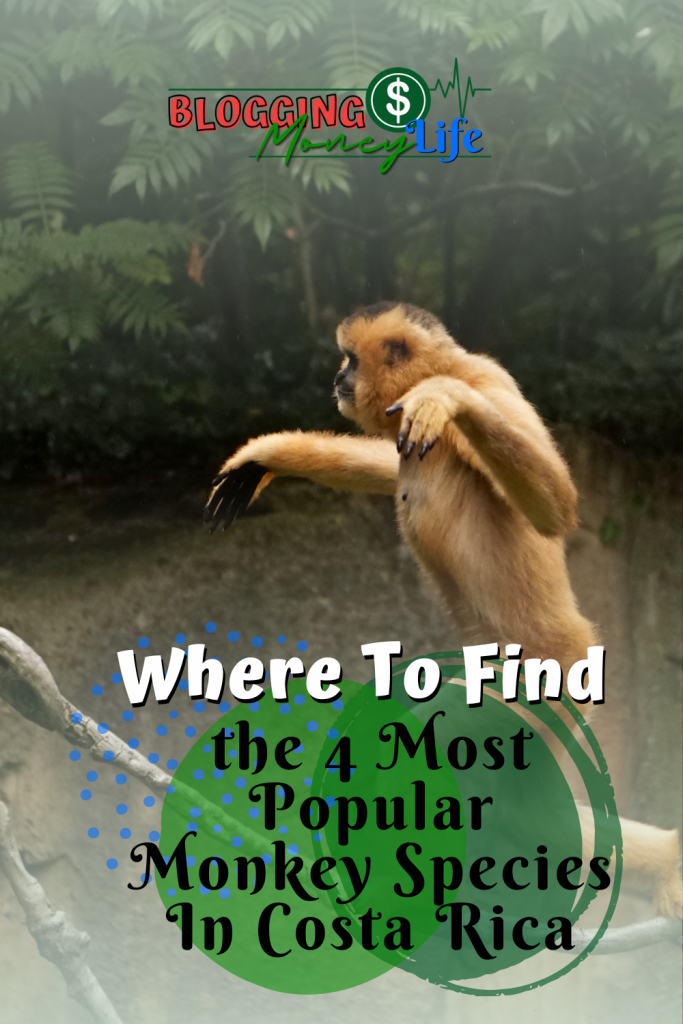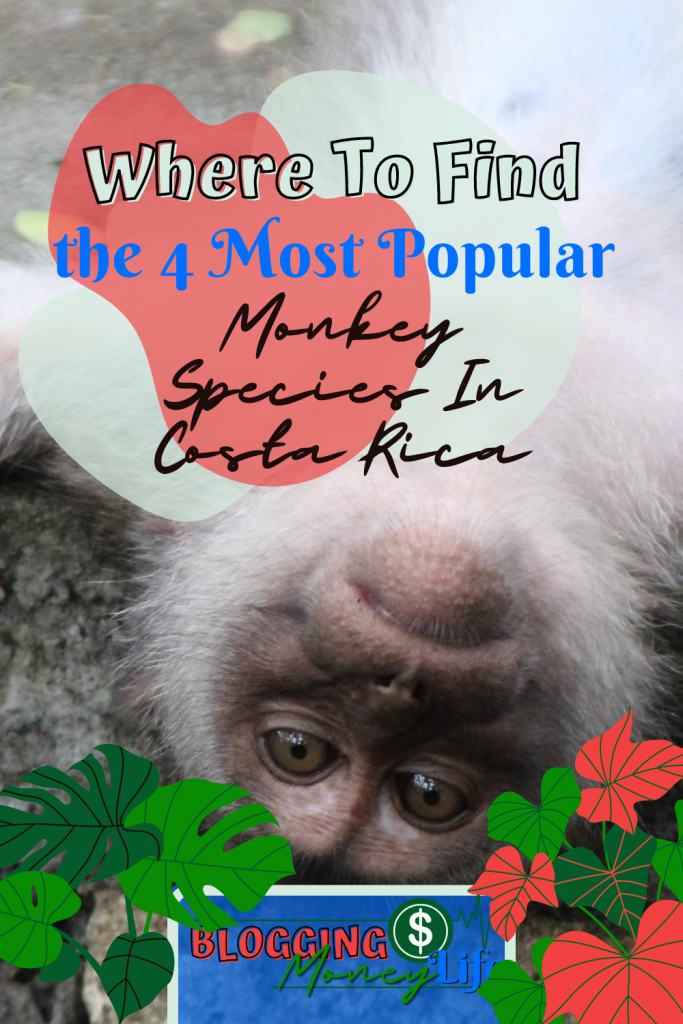Where To Find the 4 Most Popular Monkey Species In Costa Rica
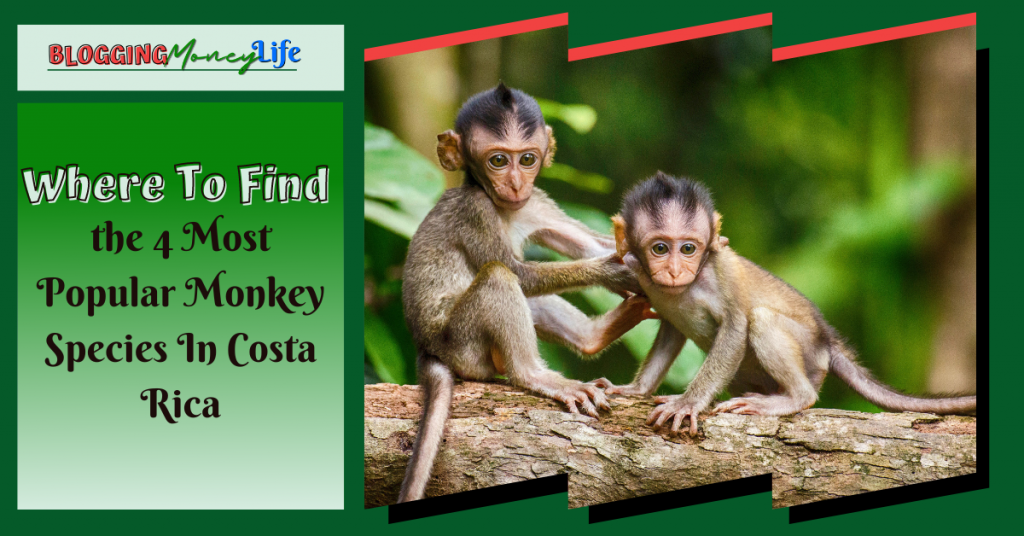
“Still more monkeys than people” is an old promotional slogan in Costa Rica that still rings true. Whether you stay at a hotel or go out in the rainforests, it is highly likely that you’ll see at least one monkey. Depending on the location and time of the year, you can see more of a particular species.
Most of the monkeys in Costa Rica are considered New World monkeys, meaning they are indigenous to the Americas. Costa Rica is home to a rich biodiversity of nature and wildlife. The country firmly upholds its commitment to the environment, so much so that a third of its land area is protected by national parks. You can find popular species of monkeys in various national parks and even in hotels where ecotourism is encouraged.
Where Can You Generally Find Monkeys in Costa Rica?
You won’t have any trouble finding monkeys in Costa Rica. They are present even in tourist places such as Guanacaste, Arenal, Jaco, and Puerto Viejo.

There are also a lot of monkey sanctuaries in every region of Costa Rica. However, each sanctuary is different. Some may treat their animals well, while others cannot due to a lack of funding or knowledge on how to take care of them properly. So, take that into consideration when choosing an animal sanctuary to visit.
Here are some sanctuaries that are guaranteed to look after their animals well:
- Diamante Eco Adventure Park – Diamante works directly with biology and veterinary medicine professionals to care for their animals. They are also under the legal supervision of the officials in SINAC, the government entity in charge of the country’s wildlife.
- Sibu Wildlife Sanctuary – This sanctuary provides a permanent home for wildlife with psychological or physical injuries that cannot be released back into the wild. They collaborate with specialists, organizations, and universities to improve their facilities.
- Jaguar Rescue Center – The owner is a professionally-trained biologist and primatologist with years of experience working with and rehabilitating animals. She has designed a ground-breaking program for the monkeys in their development in rehabilitation.
Suppose you prefer to see them in their natural habitat. In that case, you can visit national parks, or if you want to stray from the beaten path, you can visit the Osa Peninsula, Tortuguero, the southern Nicoya peninsula, and the southern Caribbean coast.
Howler Monkeys
There are nine species of howler monkeys, but the Mantled Howler Monkey inhabits Costa Rica. Howler monkeys get their name from their loud calls that can be heard for up to 3 miles.
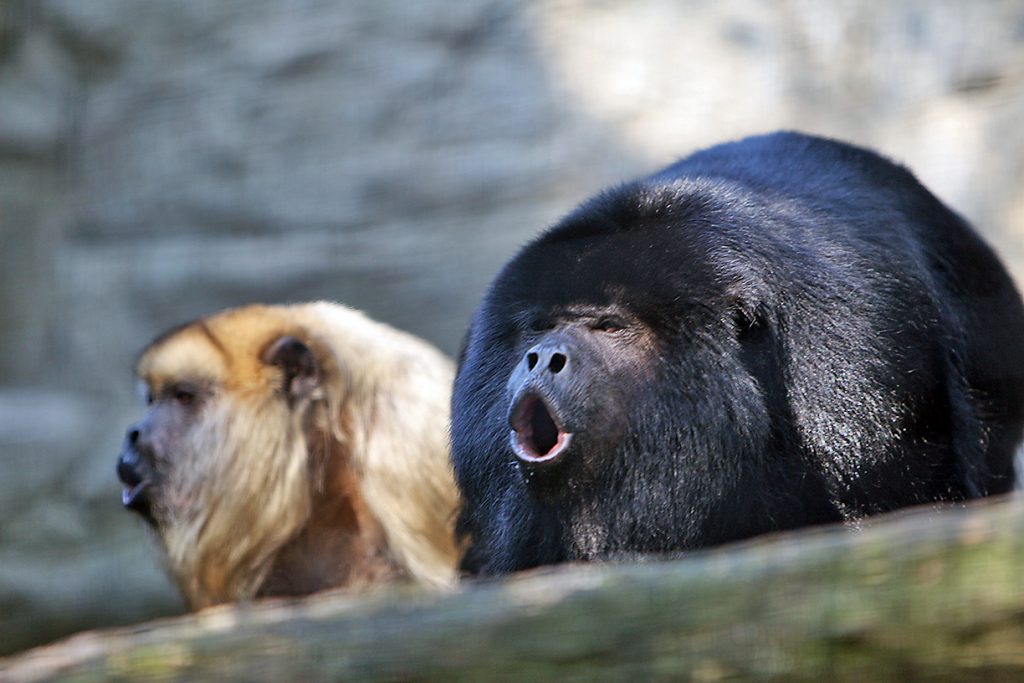
They are considered the loudest terrestrial animal relative to their size, with their howls reaching 140 decibels. That’s louder than a lion’s roar reaching only 114 decibels!
This is possible through their enlarged hyoid bone and a large lower jaw and neck area to accommodate their vocal cords. They are known to howl during sunrise and sunset, and it is believed that the primary purpose of their calls is for their turf, usually for protection and communication.
Not only do they hold the title of being the loudest monkey in Costa Rica, but they also hold the title of being the largest monkey as well. A male howler monkey can reach 3 feet in length with an equally long tail and weigh up to 22 pounds. Their black fur makes it difficult to spot them since they blend into their environment.
They live quite a sedentary lifestyle for all their burliness and loudness. As a folivore, their diet mainly comprises leaves, fruits, and nuts. They need to sleep a lot to digest the leaves and so don’t move as much as the other monkey species.
Where to Find Mantled Howler Monkeys
Mantled Howler Monkeys are one of the more common species of monkeys. You can find them in Arenal Volcano National Park, Barra Honda National Park, Manuel Antonio National Park, Corcovado National Park, and Caño Negro Wildlife Refuge.
Their natural dwellings can also be found in the Osa Peninsula, Guanacaste, Nicoya Peninsula, Monteverde, Arenal, Sarapiqui, and the Caribbean coast. You can even find a few in the trees of the beautiful beaches in Guanacaste, such as Tamarindo, Ocotal, Conchal, and Hermosa.
Squirrel Monkeys
The Central American Squirrel Monkey, or Grey-Crowned Squirrel Monkey, is considered the smallest primate in Costa Rica. They weigh around 1-2 pounds and only grow to about 28-30 centimeters.
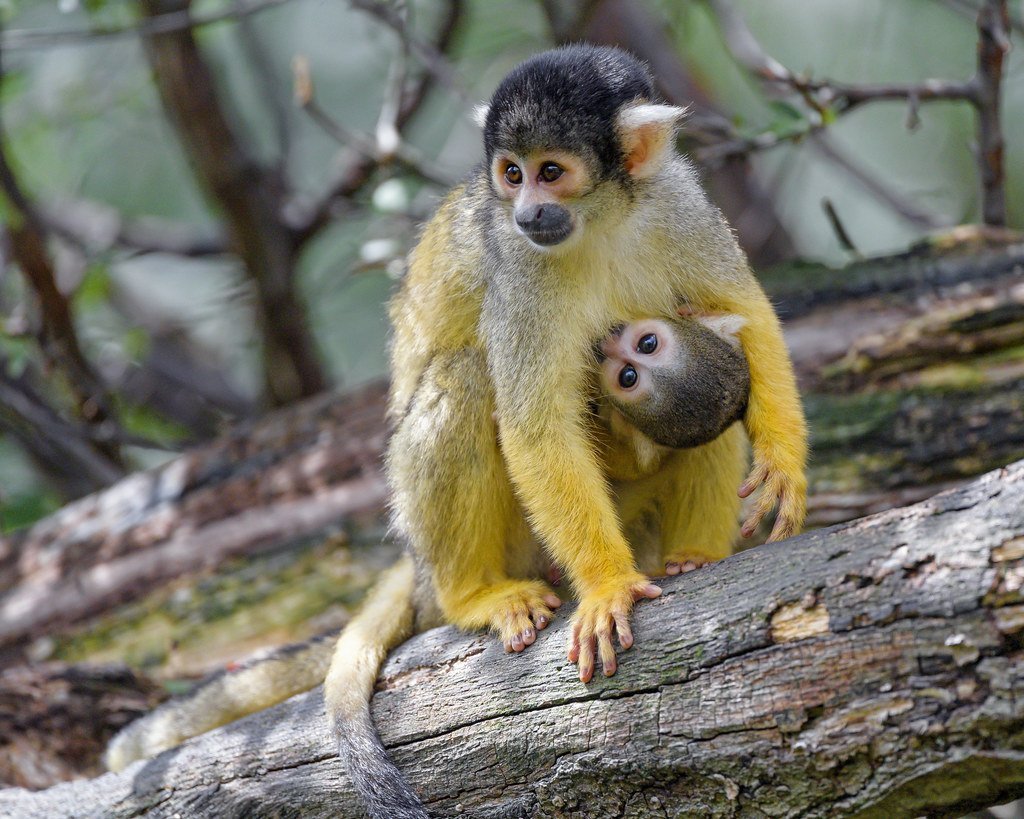
Unlike other species of New World monkeys, they do not have a prehensile tail. A prehensile tail is used to grip onto branches. Instead, squirrel monkeys use their long tails for balance, and by doing so, they are able to move around trees quickly. They tend to be quite noisy and are in constant motion.
They’re characterized to have a dark snout with white coloring around their eyes, dark brown or black coloring around their mouth and chin, and an orange-colored back. Their food mainly comprises fruits and insects since they are omnivores. They also eat other things like seeds, nuts, and eggs.
They are currently listed as a vulnerable species but were listed as critically endangered in 1996. Due to the loss of habitat and the illegal pet trade, their population, from 200,000 in 1983, dwindled to 1,500 by 2006. Deforestation is a leading cause of the loss of habitat of not only squirrel monkeys but other native animals in Costa Rica. Humans are also not the only predators of squirrel monkeys. Snakes, birds, and even cats prey on these tiny squirrel monkeys.
Thankfully, with robust conservation efforts, their status rose to endangered species in 2008. Their average lifespan ranges from 15 to 20 years, depending on whether they live in the wild or captivity. Like other monkey species, they love company and live in large groups, usually around 20-75 members.
Where to Find Squirrel Monkeys
As a threatened species, many national parks and wildlife refuges serve as their home. You can find them in Rincon de la Vieja National Park, Sirena Biological Station, Tenorio Volcano National Park, Peñas Blancas Wildlife Refuge, Corcovado National Park, Osa Peninsula, and Manuel Antonio National Park.
Spider Monkeys
The Central American Spider Monkey, or Geoffroy’s Spider Monkey, characteristically has long arms and legs and a long prehensile tail. Disproportionately long limbs and tails give off a spidery appearance, hence the name.
Living in Costa Rica has taught me that there are a ton of monkeys all over the place! Check out where you can find them!
They are considered the most agile monkeys in Costa Rica. Their tails are used as a fifth limb for grasping limbs and feeding as they move through the forest. Their strength in agility enables them to move around quickly for food or to escape threats.
As one of the biggest New World monkeys, they weigh over 13 pounds. And can even reach up to 20 pounds. They are generally 2 feet long, with their tail growing up to 5 feet in total length. Impressively, their prehensile tail can even support their entire body weight. Their fur color can range from black and brown to reddish and lighter blond-brown tones.
Look Closely…
Due to illegal hunting and trapping, along with the loss of habitat and food resources, they’ve been pushed back deeper into the forest, making them more difficult to spot. They also can be found in tropical forests throughout Central America. Usually, they live in the upper layer of the rainforests in Costa Rica. But you can see them swinging from tree branches while looking for food or having fun with their friends.
Spider monkeys are naturally social creatures. They can be found living in groups of more than 30 monkeys. During the day, they are likely to split up to roam around the trees in solitude. If there are no other members to create a troop with, some spider monkeys are known to join a troop of White-Faced Capuchin Monkeys.
They used to be more abundant around Costa Rica, but due to deforestation, hunting, illegal logging, and land destruction, they became a threatened species. Among the four species of monkeys in Costa Rica, spider monkeys are the most threatened, with their status currently endangered.
Where to Find Geoffroy’s Spider Monkeys
Spider monkeys are commonly seen in Corcovado National Park and the Osa Peninsula. You can also go to Rincon de la Vieja National Park, Tortuguero National Park, Sarapiqui, and the cloud forests of Monteverde. But you’ll have less luck finding them there since they are not commonly seen there.
White-Faced Capuchin Monkeys
White-Faced Capuchin monkeys, also known as Cebus Capucinus, are the smartest and most recognized of the New World monkeys. They’re often used in movies due to their excellent response to training. You might have seen one in Friends as Ross’ monkey, Marcel.
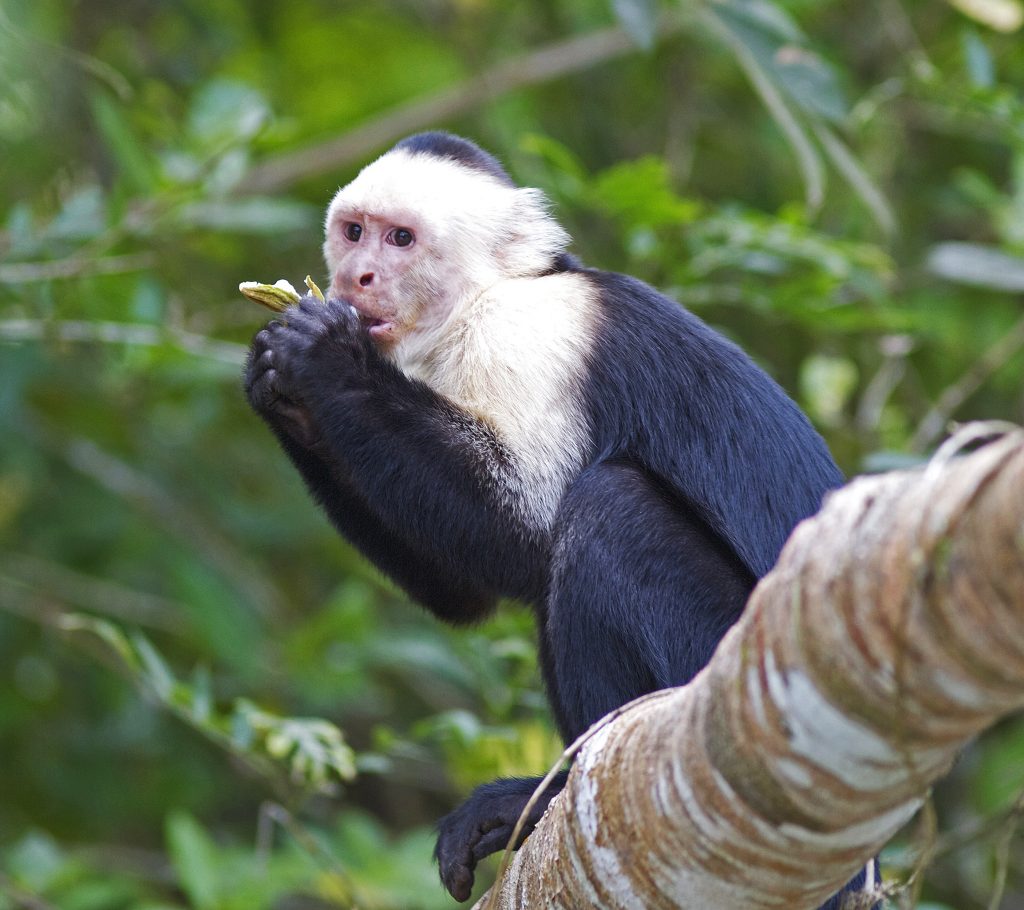
These monkeys get their names from the Capuchin friars in Italy. These friars are monks whose brown robes and hoods frame their faces. White-Faced Capuchin Monkeys have black body fur that frames their white face and shoulders.
They weigh up to 9 pounds on average. And grow to about 18 inches in body length. Excluding their prehensile tail, which can be as long as their body.!
They feed on the forest floor and in the canopy from sunup to sundown, eating mostly insects. But they will also eat fruits, bird’s eggs, flowers, and even small lizards.
They often travel in troops of up to 40 animals under an alpha male and alpha female. A typical day for them would include staying hidden among the trees, sleeping, and looking for food.
Among all the New World monkeys, they walk on the ground more and are fairly active. You can see them on the ground when they are looking for water to drink. But when they sleep, they will sleep up in the trees in between branches.
Where to Find White-Faced Capuchin Monkeys
White-Faced Capuchin Monkeys are commonly seen along the coast since one of their favorite food is crab. During the dry season, you can find them in Santa Rosa National Park and the Cabo Blanco Reserve.
They are also regularly seen in Manuel Antonio National Park, Corcovado National Park, Monteverde Cloud Forest Reserve, San Vito, and along the Osa Peninsula.
Corcovado National Park is the best place to find all the species of monkeys in Costa Rica. It is the only place where you can find all the species of Costa Rica monkeys.
But when you’re on the hunt for some great places for monkey watching, Costa Rica is a great monkey hot spot. Just visit any national parks and wildlife reserves, and you will be treated to a beautiful world of exotic wildlife.


